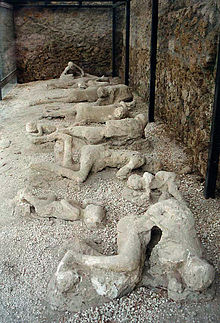 It is not a big surprise that modern buildings are designed to have a lifespan of a few decades. However, we would like archeological sites like Pompeii, to stand the test of time and be preserved for future generations. With the greatest number of UNESCO world heritage sites, Italy has long worried about how to protect its heritage sites from ruin and now the country is going to rely on the latest technology.
It is not a big surprise that modern buildings are designed to have a lifespan of a few decades. However, we would like archeological sites like Pompeii, to stand the test of time and be preserved for future generations. With the greatest number of UNESCO world heritage sites, Italy has long worried about how to protect its heritage sites from ruin and now the country is going to rely on the latest technology.
Italy has now started a €105 mil wide-ranging rescue project in February which is also jointly funded by the European Union and a new director general for the “Great Pompeii project” has been appointed. The goal is to carry out sweeping restoration works and boost visitor numbers by 300,000 to 2.6 million a year by 2017.
The researchers participating in the Pompeii Sustainable Preservation Project intend to concentrate on one of Pompeii’s apartment buildings, known as an insula. From 2014, they will embark on an ambitious conservation program, taking in everything from elaborate murals to the smallest wall. The researchers will use nanotechnology to make the lime more fluid, thus stabilizing the frescos through backfilling. The experts intend to conserve the topmost layer of the paintings using lime and silicon compounds. Researchers from various disciplines will be working alongside restoration experts and archeologists in the Pompeii Sustainable Preservation Project. The ancient city will be accurately surveyed both on the ground and through aerial photographs.
The key partners in the Pompeii Sustainable Preservation Project are Technische Universität München (Chair of Restoration, Art Technology and Science of Conservation), Fraunhofer-Gesellschaft (Fraunhofer Institute for Building Physics), and the International Center for the Study of the Preservation and Restoration of Cultural Property (ICCROM), which is attached to UNESCO. These institutions will be assisted by the Soprintendenza Speciale per i Beni Archeologici di Napoli e Pompei and the Istituto Superiore per la Conservazione ed il Restauro, which is a body of the Italian Ministry of Cultural Heritage. The University of Oxford’s School of Geography and the Environment, the Department of Ancient History at Ludwig Maximilian University in Munich, the German Archeological Institute (DAI) in Rome, the University of Pisa and the Istituto per i Beni Archeologici e Monumentali of the Consiglio Nazionale delle Ricerche (CNR) are supporting the project as research partners.
http://www.tum.de/nc/en/about-tum/news/press-releases/short/article/31030/















